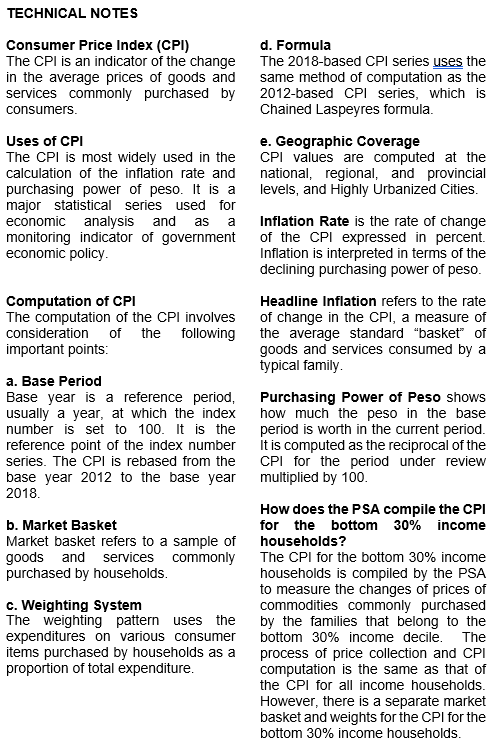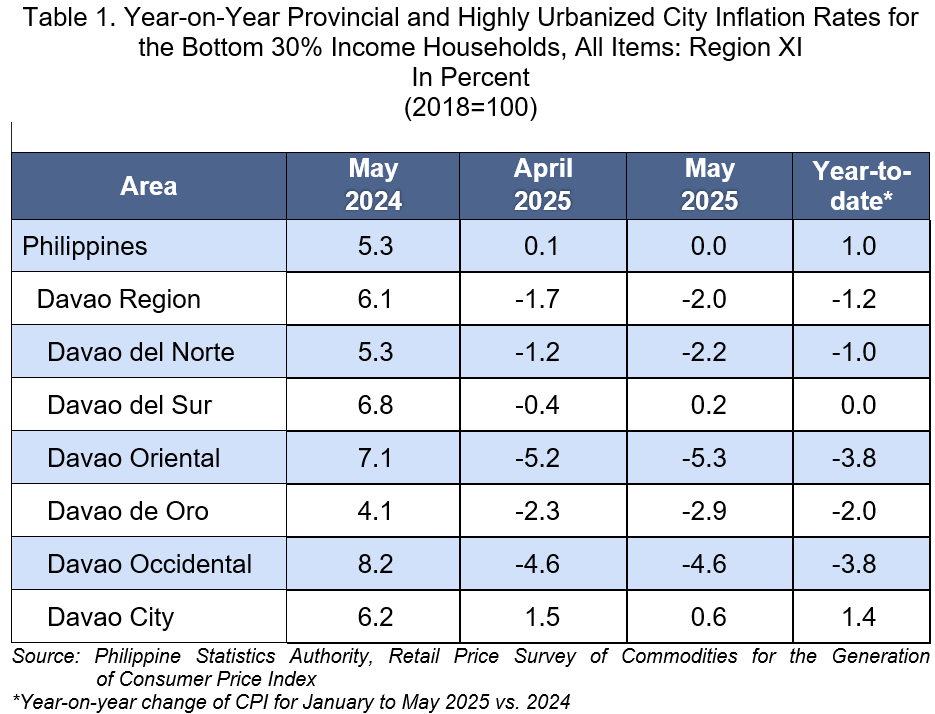
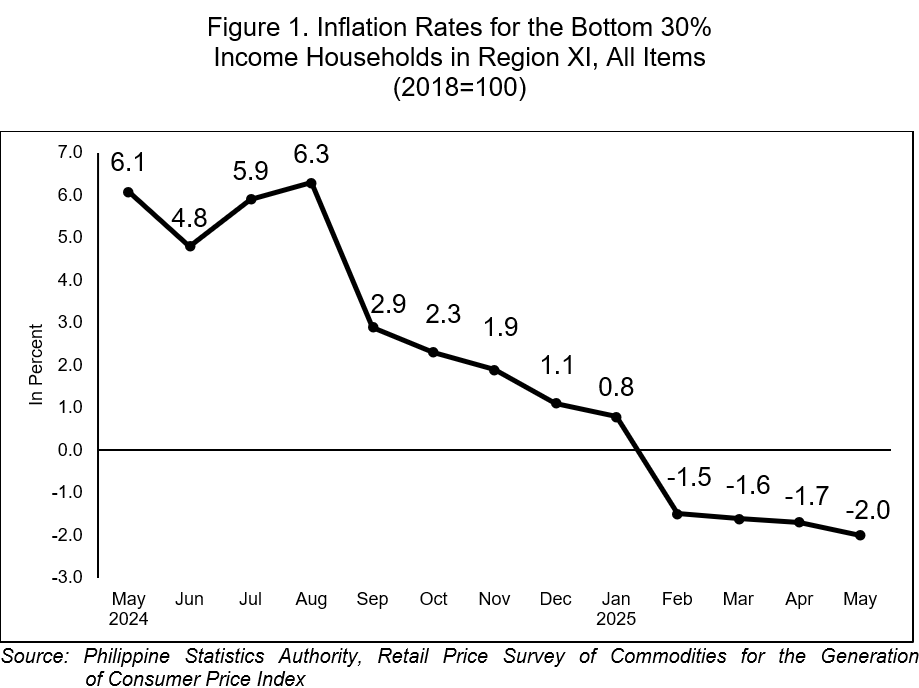
1. Regional Headline Inflation
The Davao Region’s inflation rate for the Bottom 30% Income Households declined further to -2.0 percent in May 2025 from -1.7 percent in April 2025. This is the lowest inflation for the bottom 30% income households since October 2019 at -3.6 percent. In May 2024, the region’s inflation was higher at 6.1 percent. (Table 1 and Figure 1).
The downtrend in the region’s overall inflation for the Bottom 30% Income Households in May 2025 was primarily due to the slower annual growth in the indices of Housing, Water, Electricity, Gas, and other Fuels, at -0.9 percent from 1.7 percent, and Food and Non-Alcoholic Beverages, at -4.4 percent from -4.3 percent. Additionally, Alcoholic Beverages and Tobacco, at 4.4 percent from 4.5 percent, and Recreation, Sport, and Culture, at 7.1 percent from 7.3 percent recorded slower inflation rates than in April 2025.
On the other hand, the following commodity groups recorded faster price movements in May 2025 than in April 2025:
a. Clothing and Footwear at 2.7 percent from 2.6 percent;
b. Furnishings, Household Equipment, and Routine Household Maintenance at 3.7 percent from 3.5 percent;
c. Health at 4.0 percent from 3.6 percent;
d. Transport, at -3.0 percent from -3.6 percent;
e. Restaurants and Accommodation Services, at 5.0 percent from 4.7 percent; and
f. Personal Care, and Miscellaneous Goods and Services at 3.3 percent from 3.0 percent.
Meanwhile, the commodity groups of Information and Communication, at 1.8 percent, Education Services, at 2.7 percent, and Financial Services, at 0.0 percent retained their previous month’s inflation rate.
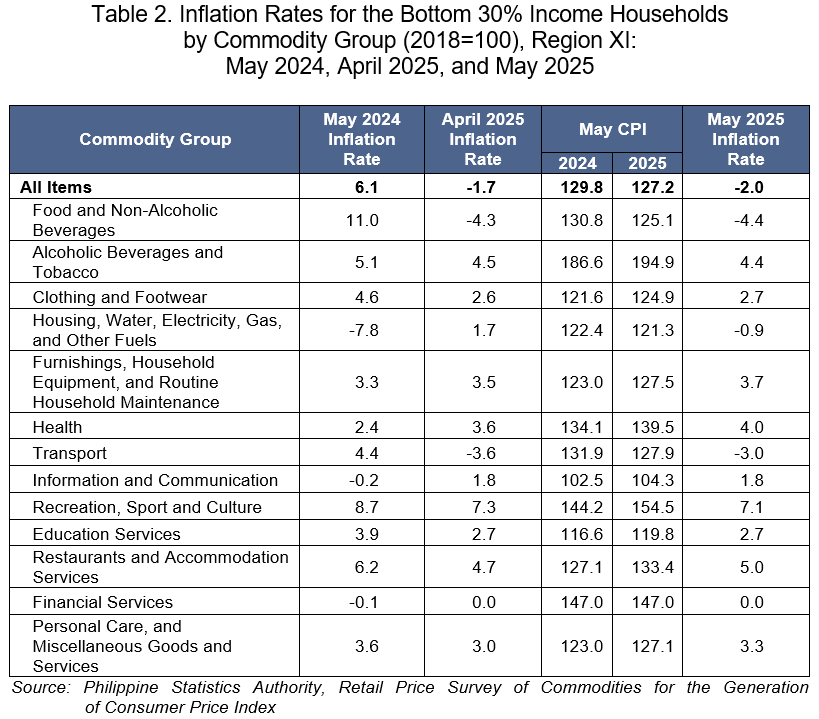
2. Davao Region Food Inflation
The Food inflation for the Bottom 30% Income Households at the regional level decreased to -5.0 percent in May 2025, from -4.8 percent in the previous month. In May 2024, the Food inflation was higher at 11.4 percent. (Table 3)
The main contributor to the downtrend of overall food inflation in the region in May 2025 was Cereals and Cereal Products, at -14.6 percent from -14.1 percent. Also contributed to the lower inflation of food for the Bottom 30% Income Households were Vegetables, Tubers, Plantains, Cooking Bananas and Pulses, at -4.7 percent from -3.0 percent, Meat and Other Parts of Slaughtered Land Animals, at 5.0 percent from 6.1 percent, Sugar, Confectionery, and Desserts, at -3.4 percent from -2.5 percent, and Ready-Made Food and Other Food Products N.E.C., at 3.5 percent from 3.6 percent.
On the other hand, the following food groups recorded faster year-on-year price movements, namely:
a. Fish and Other Seafood at 0.1 percent from -1.0 percent;
b. Milk, Other Dairy Products and Eggs at 6.2 percent from 5.2 percent;
c. Oils and Fats at 46.7 percent from 40.7 percent; and
d. Fruits and Nuts at 6.5 percent from 4.4 percent.
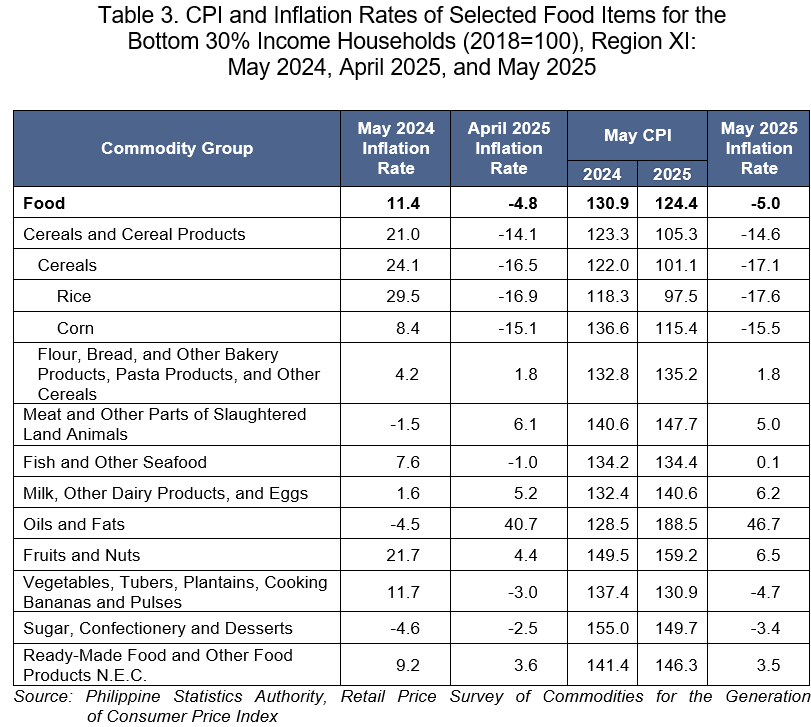
3. Regional Inflation Rates
At the national level, the country's inflation for the Bottom 30% Income Households decreased to 0.0 percent in May 2025 from 0.1 percentin April 2025. (Table 4)
Among the 18 administrative regions, the Region I (Ilocos Region) had the highest inflation at 1.9 percent, followed by National Capital Region (NCR) and Region IVA (CALABARZON) both at 1.7 percent. On the other hand, Region XI (Davao Region) and BARMM had the lowest inflation at -2.0 percent. (Table 4 and Figure 2)
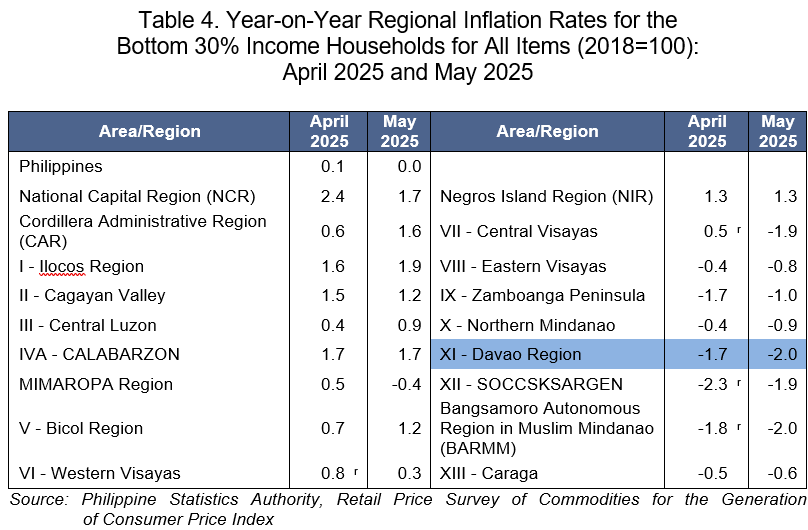
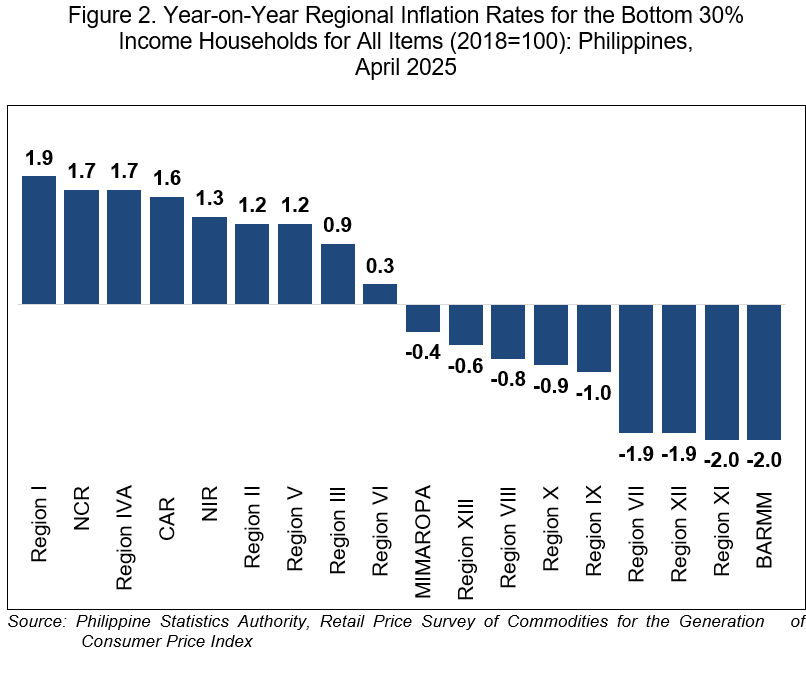
Note: CPIs and inflation rates by province and selected cities are posted on the PSA website (https://openstat.psa.gov.ph/).
APPROVED FOR RELEASE:
RANDOLPH ANTHONY B. GALES
(Chief Statistical Specialist)
Officer-In-Charge
Regional Statistical Services Office 11
